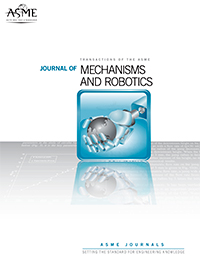The past two decades have seen immense strides being made in novel fabrication techniques, particularly in additive manufacturing (AM) technologies, also known as “rapid prototyping” and “3D printing,” as well as in novel subtractive techniques such as laser-cutting and waterjet-cutting. The most popular practical technologies, such as fused-deposition modeling (FDM), stereolithography, selective-laser-sintering, and laser-cutting, are currently used worldwide and are rapidly becoming even more widespread and inexpensive. While all these processes enable rapid and easy fabrication of parts with complex geometries, they are limited in a number of ways, including a small number of available materials, low strength of fabricated parts, and are generally only capable of producing monolithic components.
Fabricating robotic mechanisms—which generally consist of many moving parts, complicated kinematics, and require the incorporation of actuators, sensors, power sources, interconnects, and power and control electronics—prompts the need for novel manufacturing processes in order to move past the heterogeneity of...












